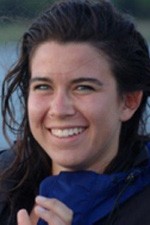Associate Professor of Biology, Co-Director Island Ecology Program
B.S., Davidson College; Ph.D., University of Georgia
Freshwater Conservation, Herpetology
Lab Website
kkcecala@sewanee.edu
I study aspects of the basic and applied ecology of aquatic organisms. I am specifically interested in how environmental change alters the ecology and distribution of amphibians and reptiles through behavioral mechanisms. I use a combination of observational, experimental, and modeling approaches to develop information that can guide the management and conservation of aquatic ecosystems and the organisms that inhabit them in the southern highlands including the Appalachian Mountains and Cumberland Plateau.
My lab has a dynamic group of students working on a variety of environmental questions ranging from public perceptions of land management to modeling environmental effects on salamander body condition and distributions. See our lab website for more information on each of their projects.
Current Student Projects:
- Assessing the relative impacts of climate and land use on salamander distributions
- Evaluating the effects of climate change on interspecific interactions
- Examining the behavioral impacts of environmental contaminants
Selected Publications:
Gandhi, J.S.*, and K.K. Cecala. In press. Interactive effects of temperature and glyphosate on the behavior of Blue Ridge two-lined salamanders, Eurycea wilderae. Environmental Toxicology and Chemistry.
Kirchberg, J.*, K.K. Cecala, S.J. Price, E.M. White, and D. Haskell. In press. The effects of small impoundments on stream quality and salamanders on the Cumberland Plateau. Aquatic Conservation: Freshwater and Marine Ecosystems.
Strickland, J.C.*, A.P. Pinhiero*, K.K. Cecala, and M.E. Dorcas. In press. Physiological constraints to respond to climate change: Insights from the effects of temperature on standard metabolic rate in larval salamanders. Journal of Herpetology.
Cecala, K.K. andJ.C. Maerz.2016. Effects of landscape disturbance on fine-scale phototaxic behaviors by larval stream salamanders. Canadian Journal of Zoology 94:7-13.
McKee, R.*, K.K. Cecala, and M.E. Dorcas. 2015. The role of bait and by-catch reduction device orientation on blue crab and diamondback terrapin catch. Aquatic Conservation: Marine and Freshwater Environments DOI: 10.1002/aqc.2587.
Bliss, M.* & K.K. Cecala. 2015. Do Appalachian stream salamanders from disturbed habitat behave differently? Herpetological Conservation and Biology 10:811-818.
Maerz, J.C., K. Barrett, K.K. Cecala, and J.L. DeVore. 2015. Monitoring and conservation planning for rare and cryptic species: a case study of an enigmatic salamander decline. Southeastern Naturalist 14:771-784.
Cecala, K.K., S.J. Price, and M.E. Dorcas. 2015. Stream salamanders accurately assess size-dependent predation threats. Herpetologica 71:184-189.
Cecala, K.K., W.H. Lowe, and J.C. Maerz. 2014. Riparian disturbance restricts in-stream movement of stream salamanders. Freshwater Biology 59:2354-2364.
Currinder, B.*, K.K. Cecala, R.M. Northington, and M.E. Dorcas. 2014.Response of stream salamanders to experimental drought in the southern Appalachian Mountains. Journal of Freshwater Ecology 29:579-587.


